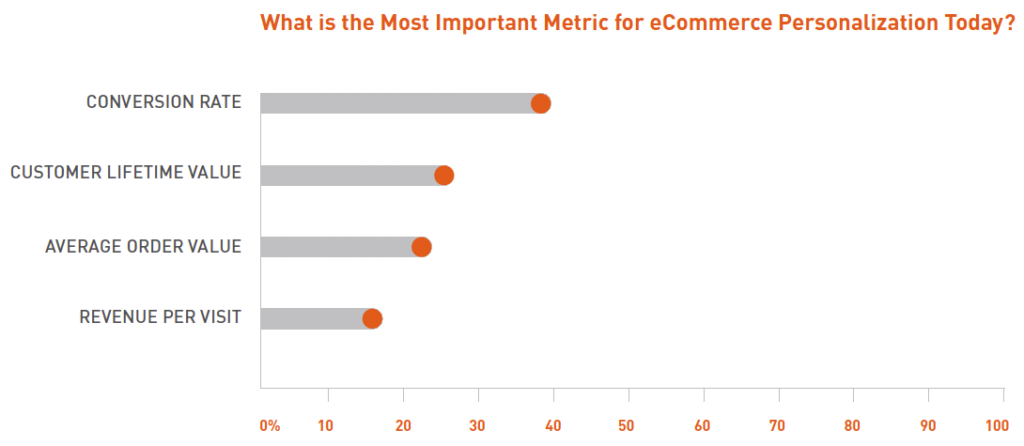Products
How your brand can personalize customer experiences with MMS and rich messaging – part 3

Products

Okay. We’ve gone on and on about technology solutions for what’s probably a novel now (Part 1, Part 2). It’s time to get PERSONAL.
The reality of customer communications today, especially when it comes to marketing, is that consumers dislike advertising. According to an Adlucent study in 2016, 75% of consumers prefer to see fewer ads, and 71% prefer ads that are tailored to their personalized interests and shopping habits. At the same time, 44% of consumers are willing to provide personal contact info in order to receive more relevant ads, and 87% believe personalized advertising means unique content, based on previous purchases or shopping behavior and delivered at a time when they are looking to make a purchase (Adlucent 2016).
Looking at a more recent study conducted by WBR Insights, 94% of marketing and digital commerce leaders across North America “agree that eCommerce personalization is important for driving greater engagement among customers”. Furthermore, they tie personalization to key business metrics such as Conversion Rate, Customer Lifetime Value (LTV), Average Order Value and Revenue Per Visit (WBR Insights, 2019).

We can see the trend appearing here. Consumers are very aware of being advertised to and demand personalization, while leaders in the field know the business outcomes they can achieve by focusing on personalization.
This is where we see the transition into the age of relevance, from the age of loyalty. With so many options now available to consumers at their fingertips, it’s no longer enough to just have a good product or service. Being relevant to your customer is the new challenge facing customer experience professionals today, and so there is heavy investment in this area.

Personalization certainly requires data and insights on your customers. With today’s CRM and software solutions, there are many ways to capture and harness this data, but it is still one of the biggest challenges for many companies in realizing the dream of personalization.
As “personalization” comes in many flavors, it is essential to break down the necessary elements. Personalization can be as simple as using a first name, sending a birthday message, or following up on a specific product your customer was looking at or put in their shopping cart on your website. We are in the age of the on-demand economy, enabled and fed by our mobile devices and our “always-on” connection to the internet. Today’s most successful companies are changing the way we do business, interact with one another, and how we interact with them. So let’s dive into a few of the common personalization strategies organizations are deploying today:
As we can tell from the examples, personalization comes in various forms that use elements of identity, content, and the channel itself to create a more personalized experience. The right way to do things is not the subject of our discussion, but rather the focus is on the business outcomes that different methods can deliver based upon highly specialized variables for various brands. What works for one may not work for another, and this could be due to a range of factors, including brand, product, and the macroeconomic environment.
This is why it’s so important to ask yourself “what do I want my customer doing or seeing more of?” and “what do I want my customer doing or seeing less of?”, then build out specific objectives and metrics to test. Finally, A/B test what works for your customer segment, product line or other initiative. This part is absolutely crucial to not only prove the improvement in business metrics but also to test different variables. You may see different results depending on the channel used to deliver the message, the amount of text you send, whether you use text, static images, gifs or videos, or other factors such as the audience, promotion or time of day you set. One could write a textbook or series on A/B testing alone (and has). We’ll leave that up to our Sinch Engage data scientists (yes we have data scientists!).
Brands are competing for people’s attention while most of the time they’re looking at their mobile device. People are spending so much time on their phones, Apple released the Screen Time feature for iOS in 2018, and gives key breakdowns of where you spend time, and tools to schedule time away from the screen, or set time limits for specific apps. Now consumers are looking for ways to spend LESS TIME on their mobile phones, but this is difficult (impossible for me!) and so we must be selective with our attention and interactions on our phones, especially those that are not relevant (both in general and at this time).
So how do we cut through the noise when everyone else is competing for your customer’s attention? This is not just a marketing question, as we’ve heavily focused on that as a use-case so far. This is a comprehension question. Whether it’s promoting a sale, providing valuable or mission-critical information, or building a chatbot driven, app-like conversational experience through RCS, user-experience (UX) comes hand in hand with customer experience (CX). Leveraging the most far-reaching communication channels in a way that provides relevant, personalized and valuable information at the right time and in a way that can be easily consumed (comprehended) by a recipient is one of the most highly researched areas of customer engagement today, if not the most.
User-experience (UX) comes hand in hand with customer experience (CX)
Useful data is hard to come by. That’s why Sinch put together a helpful infographic that reveals the true potential of leveraging a personalization strategy in your customer engagement initiatives:
Check out our latest eBook: Messaging and Personalization – Transitioning from loyalty to relevance, our webinar in partnership with MEF or our Personalization product pages!
Last year (2018), Sinch acquired a company called Vehicle (founded in 2010) in Seattle, Washington. Today we call it Sinch Engage, a full-service marketing agency that lives within the Sinch umbrella and brings together some of the most cutting-edge data, mobile messaging and image/video/audio production technologies to create the most advanced personalization engine for mobile messaging available today. This is not your standard software as a service (SaaS) solution, but a full team of experts that work closely with our clients on strategy development, campaign management/execution, creative development, production, and analytics.
Sinch Engage’s dynamic video messaging platform enables enterprises to make more meaningful and personal one-to-one connections with their customers, directly on their mobile phones. From dynamic text and images to personalized videos, where all aspects of the audio and visual tracks can be tied to individual customer attributes, Sinch Engage delivers highly targeted communications to each unique consumer.
By leveraging an essential list of ingredients and putting them into our magic box, Sinch Engage has proved through many successful projects that dynamic, personalized rich imagery and videos delivered through mobile channels enables brands to drive customer engagement to increase loyalty and sales, support on-boarding, and reduce churn (think back to the key metrics eCommerce leaders are measuring against personalization shared above).
Sinch Engage has powered campaigns for brands such as AT&T, Macy’s, MillerCoors, and Cricket Wireless. We bring together a team of in-house business strategists, creative resources, data scientists, and much more combined with the power of the Sinch Super Network to deliver real-time messaging for brands. Some of these campaigns leverage 50 or more unique data points about a recipient while building rich images and videos on the fly, then sending these out to 30 million+ subscribers in real-time. Sound like magic yet?
Let’s revisit the metrics, as we’ve already covered the benefits of first leveraging SMS, then using MMS (rich imagery and videos). Now we want to add the “magic” of hyper-personalization at scale with Sinch Engage.
These are all great metrics, but you may be thinking, “how do I apply that to my business?” and that’s precisely the right question to ask. Our process is to work with your team and your systems to address specific metrics you are already measuring, and find ways to augment your existing efforts through A/B testing to prove the value of a personalized dynamic rich messaging campaign that makes sense for your customer engagement objectives. We can go as far as full-blown customer lifecycle management, build storyboards, cadences, and then make your creative elements. We can then take aspects of that creative and make individual pieces dynamic so that we can quickly and efficiently send out millions of unique images, gifs, and videos (think 60-second unique personalized commercial spot for every customer in your campaign!).
Our process is to work with your team and your systems to address specific metrics you are already measuring, and find ways to augment your existing efforts through A/B testing to prove the value of a personalized dynamic rich messaging campaign that makes sense for your customer engagement objectives
1) Dynamic elements about a specific customer’s bank account activity are used to generate a custom image with key points of personalization that are unique to the recipient. Once again, these are generated “on-the-fly” with the latest information, for mission-critical service messages like shown here.

2) Go more advanced, and have a video created again “on-the-fly” including professionally recorded audio with voice actors to really drive your message home and truly “speak” with your customers. These can be made with graphic images, or we can even shoot a full 60-second commercial with real actors depending on your budget!

3) Deliver across ANY channel, not just mobile. Being able to leverage these capabilities at key customer touchpoints on their journey is crucial to gaining the full benefit of customer lifecycle management being augmented with advanced personalization methods.

Now, bringing this all together we see the progression to relevancy from loyalty by using the right message on the right channel at the right time is clear. The technology landscape now enables a personalized and one-to-one customer communications environment, and this brings huge benefits for customer loyalty, conversions, business operations efficiency and overall brand value in the eyes of your customer.
The author does not claim to be an expert on personalization and recognizes it is an ever-evolving and highly researched field. His articles are his opinion, with researched resources and experience working as a mobile messaging and technology professional for nearly a decade. The author intends to open conversations on topics that interest him and hopefully interest his network.
Want to learn more? Or just want to connect? Please feel free to reach out to me! I’d love to chat.
Originally posted on LinkedIn by Aly Abji.